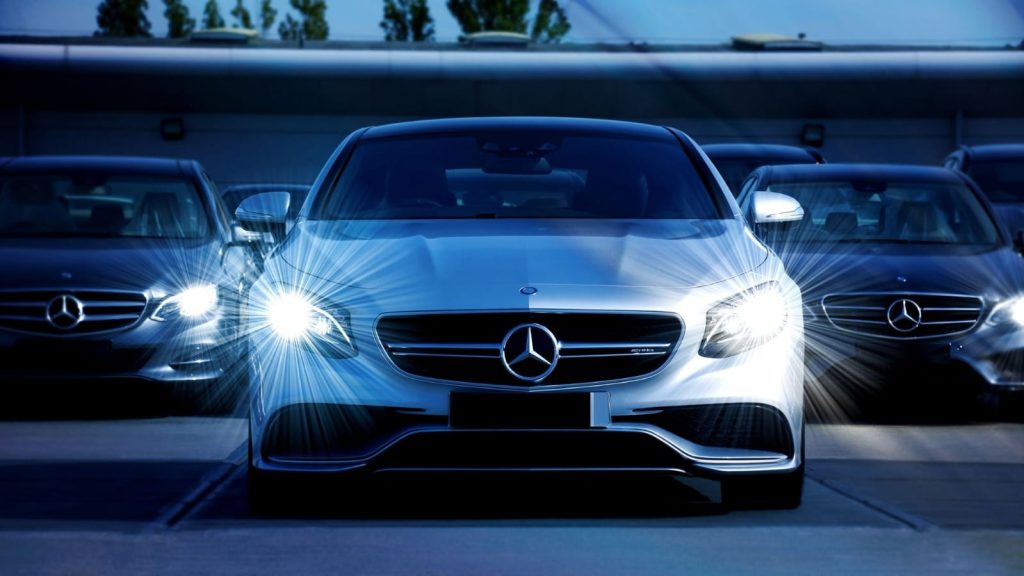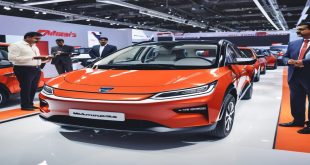So this is the second generation Toyota CHR and if you remember the first generation car was a big selling style heavy small SUV and this second generation model is obviously hoping to follow on in the same vein. We’ve already driven it as a regular hybrid but this now is the new plug-in hybrid version.
So what are the differences between those two cars?
Well, on the outside, there really isn’t much to point out at all. There’s obviously a charging port and there is a new badge. But aside from that, there isn’t much to say. But there are obviously much bigger changes underneath the car.
So if you go for the regular hybrid CHR, you have a choice of a 1.8 litre engine or a two litre engine. But if you go for this plug-in hybrid, then you get that same two litre engine, but it also comes with a much bigger 13.8 kilowatt hour battery. And so in the regular hybrid CHR, you can travel on pure electric power alone, but only for very short distances around town. In this plug-in hybrid, because it’s got a much bigger 13.8 kilowatt hour lithium-ion battery, the official pure electric range of this car is up to 41 miles, and it also comes with a heat pump as standard. So if you want to heat the interior of this car in cold conditions, it can do it in a more efficient way than if it didn’t have a heat pump.
Now, this plug-in hybrid setup is very similar to what you will find underneath the new Toyota Prius plug-in hybrid. And when that car was first revealed, we were told that it definitely was not going to come to the UK. However, since then, Toyota has reversed that decision and the new Prius is in fact on its way to the UK with a much better official range than what the CHR has, even though they’ve got very similar plug-in hybrid setup.

So officially, the Prius can travel up to 53 miles on pure electric power alone versus 41 miles in the CHR, and Toyota said that the reason for the difference is just really down to aerodynamics. Clearly, the Prius is more aerodynamic than the CHR. Anyway, the CHR does have the upper hand over the Prius when it comes to charging because the Prius can only accept a maximum charging speed of 3.5 kilowatts, which, to be honest, is pretty pathetically slow for a plug-in hybrid. This can charge at twice the speed, so it can accept a maximum charging rate of seven kilowatts. So that means if you plug this into a home wall box charger, you can go from flat to full in two and a half hours. But that is the fastest that it can charge. It won’t be able to rapid charge. So if you’re on a long motorway journey and you want to get a really quick CCS top up at a motorway service station, you won’t be able to do that in the CHR. But to be honest, rapid charging speeds like that are quite rare in the plug-in hybrid class.
Anyway, this plug-in hybrid version of the CHR is quicker and more powerful than the regular hybrid versions of the CHR. So this plug-in will be able to do the 0-62 miles an hour sprint in 7.4 seconds. If you go for the two litre hybrid, the same sprint is done in 8.1 seconds, and in the 1.8 litre hybrid, it’s 10.8 seconds. So this is the quickest CHR that you can buy and it’s also quick compared to the direct plug-in hybrid rivals that this is up against and that includes the Kia Niro plug-in hybrid and also the Mazda MX-30 REV.
But obviously, plug-in hybrids are not just about outright speed, are they? It’s very important that they have nice interiors as well. So how does the CHR stack up in here?
Well, it is pretty much identical to the regular hybrid. Obviously, there’s just some slight differences in the driver display and the things that you’re shown there. But otherwise, you still have the same impressive driving position, which does feel noticeably higher than a traditional hatchback. And this center console is also angled slightly towards you. So it’s very good in the sense that it’s easy to see things and it all falls easily to hand. The only problem really with the driving position is the view over the shoulder, because you’ve got this fancy styling at the rear of the car, it does create some blind spots with the pillars back there. And also the rear window is pretty small as well. But otherwise impressive up front.
And what’s also really good is the fact that you’ve got these very nice quality physical buttons for the air conditioning. And again, they fall very easily to hand. You’ve got a gear selector in a nice, easy, simple place. It’s very easy to use. And this touchscreen infotainment system is also fairly decent. It’s not the most intuitive layout around but it doesn’t take too long to get your head around it and also importantly you get Apple CarPlay and Android Auto and in terms of quality in here this again like the regular hybrid is really impressive because you’ve got lots of dense soft touch materials around everything feels really robust and built to last and it’s also good in terms of practicality because under this armrest here you’ve got a decent cubby you’ve got a tray for your wireless phone charging a couple of cup holders. The door bins are a bit on the small side, but they’re still useful.



